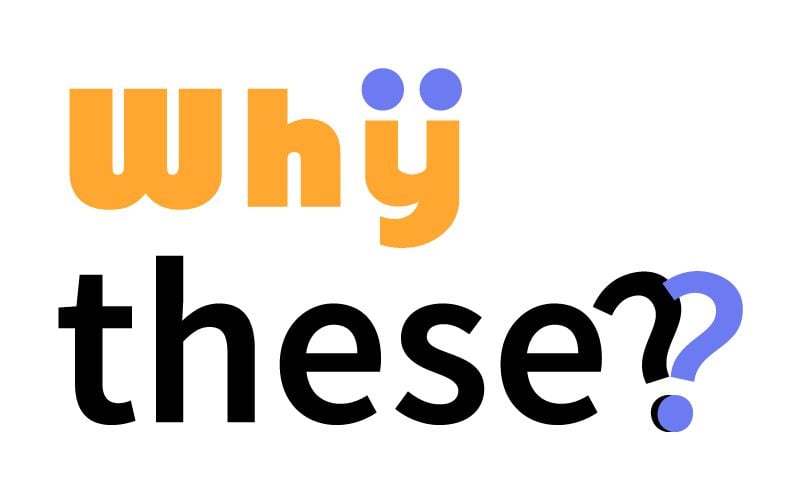Magic In Retrospect: Hidden Gems Discovered During A Harry Potter Re-Watch
Returning to the enchanting world of Harry Potter is a journey filled with nostalgia, a chance to immerse yourself again in the spellbinding dimension of magic, friendship, and adventure. Nearly everyone has read the Harry Potter novels and watched the films more than once. It’s a classic series with a timeless appeal, but beyond the thrill of revisiting our favorite scenes lies a treasure of hidden gems, subtle details, and delightful Easter eggs that may have escaped our notice during our initial viewings. These nuggets add depth to the Harry Potter universe, inviting us to delve deeper.
Join us on a journey of rediscovery as we explore 45 things we noticed after rewatching Harry Potter. Gather round Potterheads! We guarantee these things escaped the notice of even the most tenacious fans. Get your wand, put on your Hogwarts robes, and prepare to be spellbound again.
1. The Hagrid Effect
Hagrid’s impact on Harry Potter’s life throughout the series is profound, earning him the affectionate moniker “the Hagrid effect.” Hagrid introduced Harry to the wizarding world, and he took Harry away on Sirius’ bike to start school in the magical world of Hogwarts.
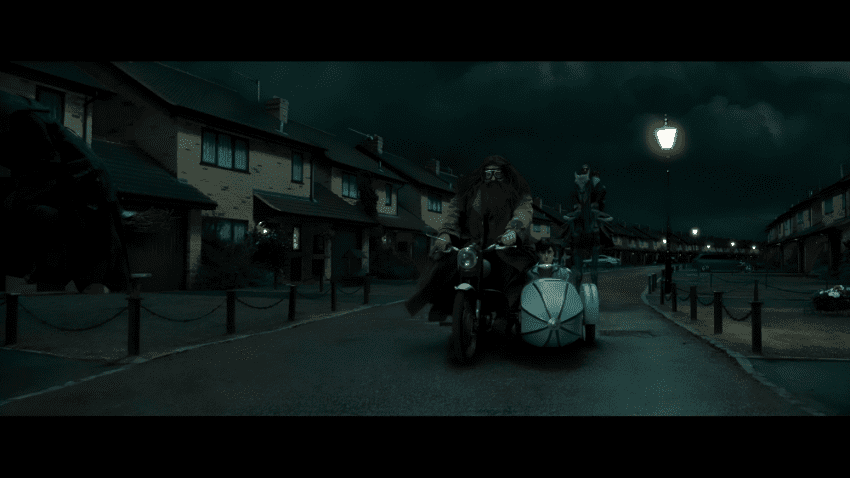
Hagrid is instrumental in revealing Harry’s true identity as a wizard. He also arrives on the exact vehicle in Harry Potter and the Deathly Hallows I to take ‘the boy who lived’ away from the Dursleys. However, on this occasion, he has attached a passenger seat to accommodate Harry.
2. Forget Me Not
In Harry Potter and the Sorcerer’s Stone, Neville Longbottom, a clumsy child, receives a Remembrall from his grandmother, a magical device that turns red when the owner forgets something. Despite its significance, the young man initially struggles to recall what he’s forgotten.
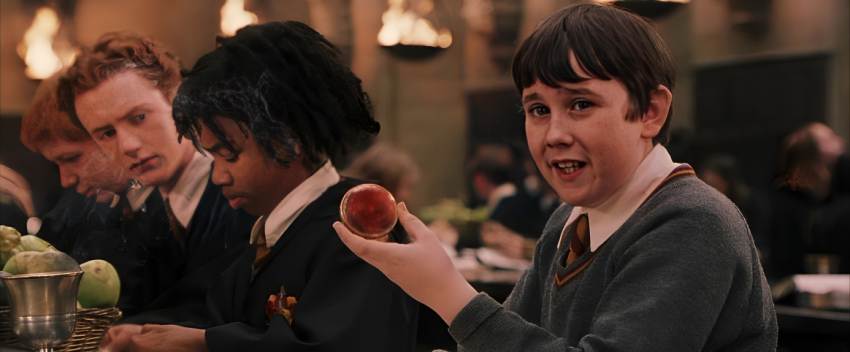
Later, it’s revealed Neville forgets his robe, which he needs for class. This minor detail highlights his forgetfulness and serves as an introduction to his character’s traits: clumsy, forgetful, yet ultimately brave. It also foreshadows his growth throughout the series.
3. The Burning Scar
In Harry Potter and the Sorcerer’s Stone, there is a scene during Harry’s class where his scar begins to burn after Professor Snape looks at him. This moment sparks curiosity among viewers; it hints at a connection between Harry and Snape. It sparked many speculations.
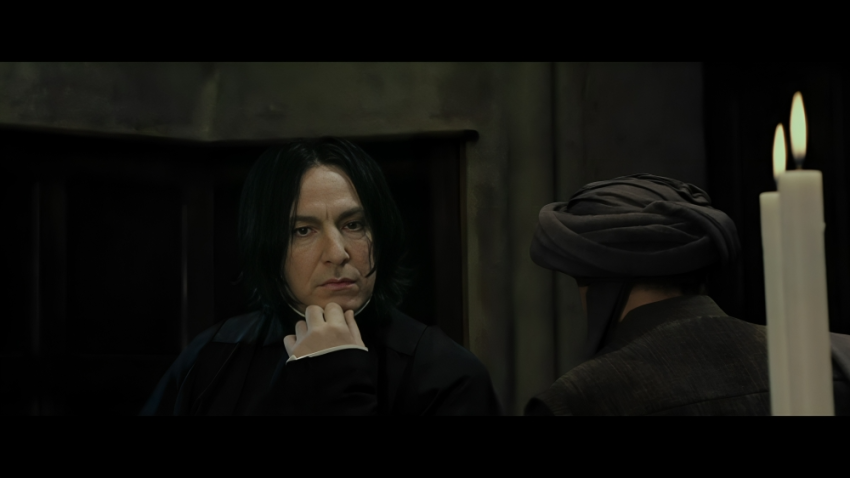
Many thought it was a warning that the professor wanted to harm the boy. The burning sensation in Harry’s scar is later revealed to be a reaction to the presence of Voldemort’s dark magic. Snape’s intense gaze triggers the effect because he is indirectly connected to Voldemort as a former Death Eater and follower.
4. Professor Snape’s Battle With Professor McGonagall
The battle between Professor Snape and Professor McGonagall occurs in Harry Potter and the Deathly Hallows II during the Battle of Hogwarts, otherwise known as the final conflict of the Wizarding War. It is a dramatic showdown between the two powerful wizards, each fiercely loyal to their respective causes.

Ultimately, Snape’s true allegiance is revealed, and he escapes, leaving McGonagall and the others to continue the fight. Snape, revealed to be a double agent working for Dumbledore, is protecting the castle under Voldemort’s control, while McGonagall leads the resistance. What a formidable team the two made!
5. Not A Single Spell
In Harry Potter and the Sorcerer’s Stone, despite being the titular character and attending Hogwarts School of Witchcraft and Wizardry, Harry Potter surprisingly never casts a spell or does magic. Instead, he relies on his innate abilities, courage, and quick wits to overcome challenges. You’d think he’s not much of a wizard.
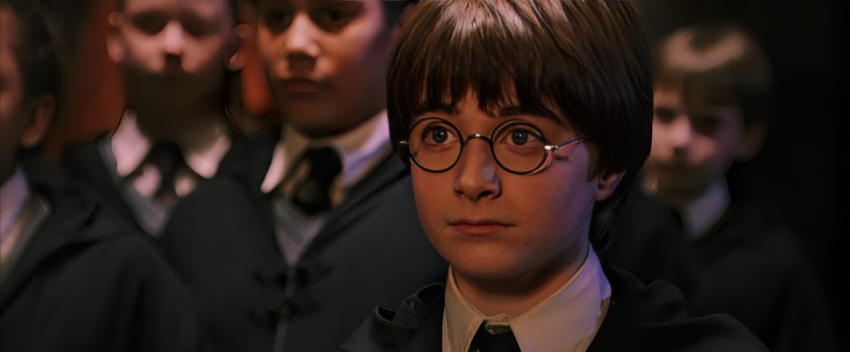
His triumphs, however, stem from bravery, loyalty, and cleverness rather than magical prowess. This underscores the character development theme and the importance of personal qualities beyond magical abilities, which we love. Harry’s journey in the first book sets the stage for his growth.
6. Gilderoy Lockhart
Gilderoy Lockhart is the charming wizard known for his flashy smile and dubious accomplishments. Born to a muggle and a witch, his vanity and obsession with his appearance are central aspects of his character, and his hair is frequently mentioned in the books as part of his persona.
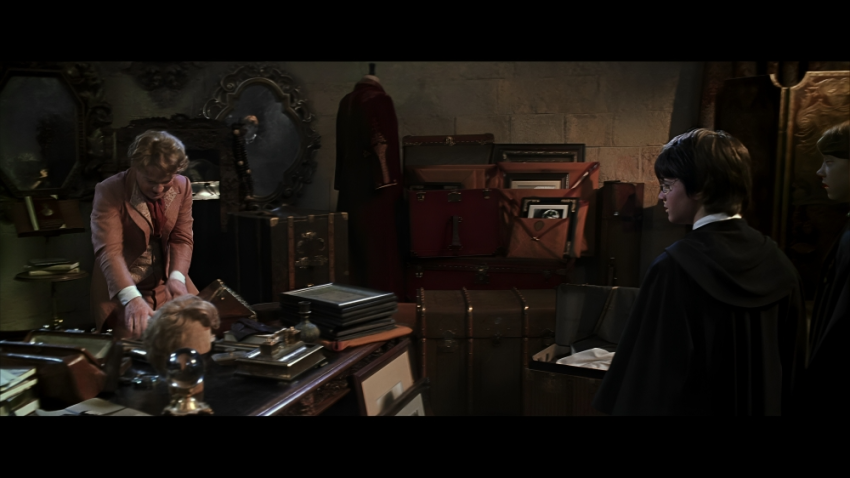
So, while he may have been humbled by his encounters with magical creatures and memory loss, his hair symbolizes his vanity and self-absorption. For all his good looks, you might be surprised to know that he is bald, but he invented the Occamy egg yolk shampoo, which was deemed too expensive and dangerous for the market.
7. Divine Magic Ads
Dumbledore’s legacy extends far beyond his time at Hogwarts, as he leaves a lasting impact on the wizarding world. His character embodies themes of love, sacrifice, and the power of goodness over darkness, making him one of the most beloved wizards of all time.

We know you didn’t notice this, but in a scene of Harry Potter and the Half-Blood Prince, we see Professor Dumbledore standing in front of a billboard. Upon closer examination, the billboard promotes Divine Magic, a woman’s perfume by Lima Carneiro, believed to have been manufactured since at least 1926.
8. The Number 7
The number seven is significant throughout the series. The series consists of seven main books, followed by the seven Horcruxes. If you also recall, wizards and witches attended Hogwarts School of Witchcraft and Wizardry for seven years, and they believed that seven was the most powerful magical number.
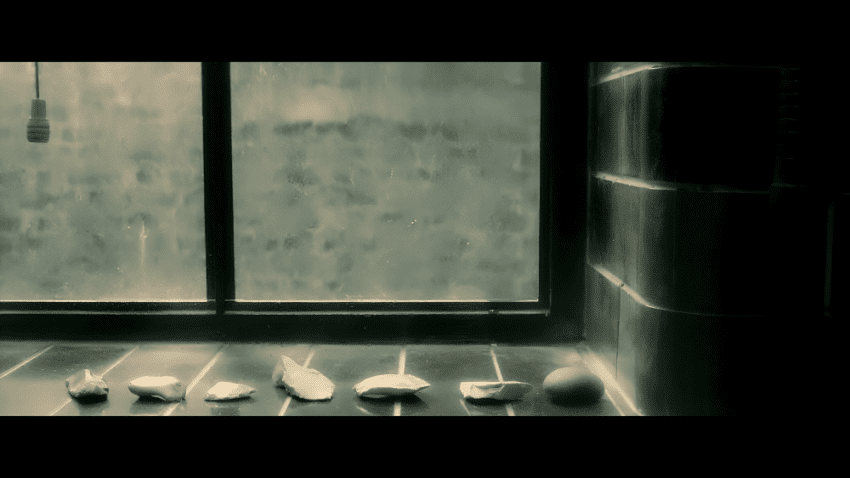
The fictional and magical game of Quidditch, the wizarding sport played on broomsticks, also involves seven players on each team. Then, the Weasley family, one of the central families in the series, consists of seven members: Arthur, Molly, Bill, Charlie, Percy, Fred, and George.
9. The Ministry Of Magic
The Ministry of Magic in the Harry Potter series, as an essential organization, has various codes and regulations governing the wizarding community. These codes encompass laws related to the use of magic, magical creatures, and the conduct of wizards and witches, especially when in the Muggle world.
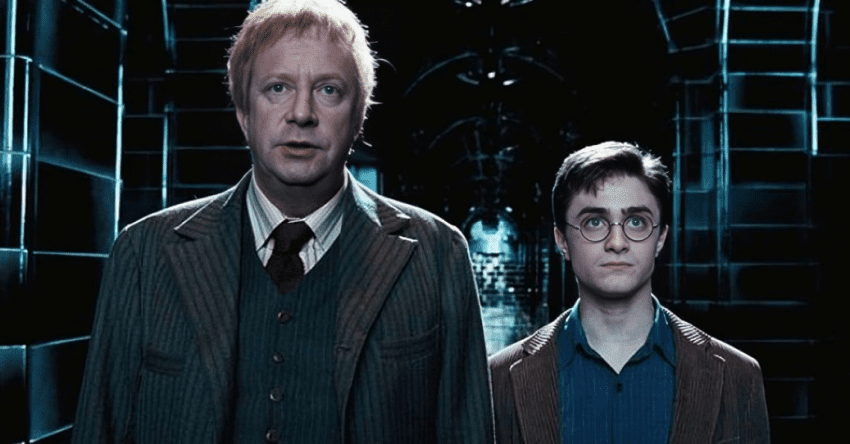
These codes and regulations help maintain order. In Harry Potter, Bill Weasley escorted Harry Potter, and to access this booth, you had to dial a code. Mr. Weasley dialed 6-2-4-4-2, which, when entered into a phone pad, spells the word m-a-g-i-c. Clever, don’t you think?
10. Harry Potter Novels
We won’t blame you if you missed this one because many did. The novels appear in the Harry Potter films as source material references. For example, in Harry Potter and the Chamber of Secrets, we see the books when Harry is sitting in Flourish and Blotts bookstore.

We see a stack of books featuring the distinctive cover design of the actual Harry Potter novels on a nearby shelf. This acknowledges the impact of the book series within the wizarding world itself, blurring the lines between fiction and reality. More than 500 million book copies have been sold in the real world.
11. Perfect Match
Ron Weasley’s Patronus is a Jack Russell Terrier, reflecting his loyalty. He is always by Hermione’s and Harry’s side. As for Hermione Granger, her Patronus is not explicitly mentioned in the books, but in an interview, J.K. Rowling stated that Hermione’s Patronus would be an otter. This choice is symbolic.
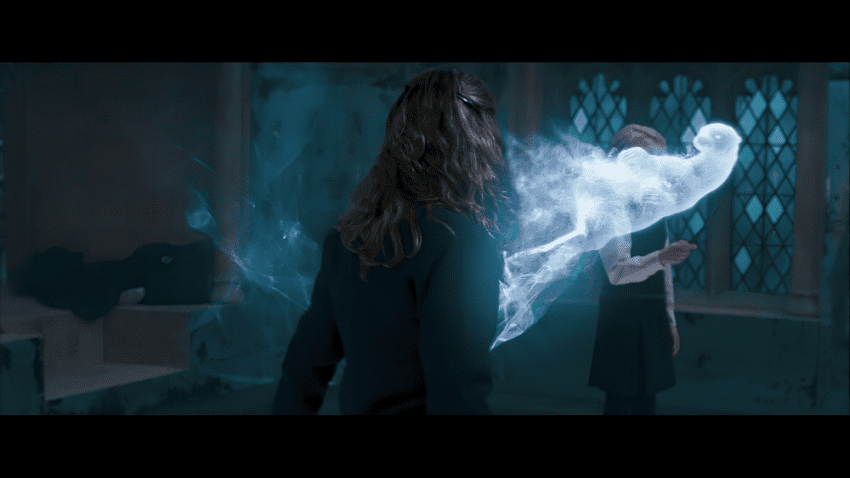
Ron’s and Hermione’s Patronus are both dogs; fans have interpreted this as a sign that they are meant to be together. Canines are renowned for their ability to form strong bonds with their mates, symbolizing their deep connection. No other Patronus is more suitable for two of Harry’s closest friends.
12. The End Credits Of Harry Potter And The Prisoner Of Azkaban
It has become a trend for several movies to have surprises during and after the credits are shown, and the Harry Potter movies have jumped on the bandwagon. The Marauder’s Map appears throughout the credits of Harry Potter and The Prisoner of Azkaban. This is quite intriguing and stunning in and of itself.
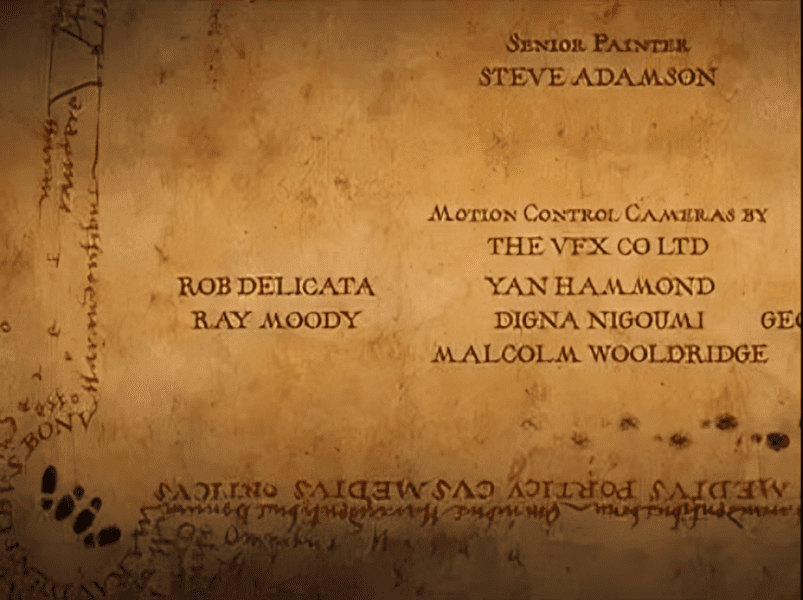
If you missed it, two pairs of footprints were in the bottom left corner. We don’t know who they belong to, but we’d like to know. It’s been conjectured that these two people are locked in an embrace, but we sense there was a potentially intimate relationship due to the proximity of the footprints.
13. Harry Potter’s Scar
The scar on Harry Potter’s forehead was caused by Lord Voldemort when he attempted to kill him with the Curse while still a baby. However, instead of killing Harry, the curse rebounded upon Voldemort, destroying his physical form and leaving Harry with a scar.
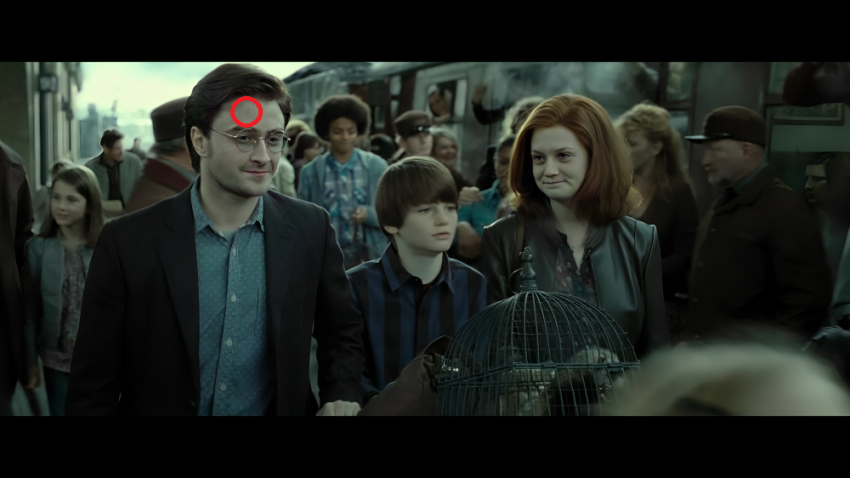
The scar is a physical reminder of the connection between Harry and Voldemort. However, after Voldemort’s defeat in the final part of the series (Harry Potter and the Deathly Hallows II), Harry’s scar became faint and barely noticeable. That must be because his nemesis is no longer around.
14. The Hair
Among certain things that you might have missed in the entire series must have been Hermione’s hair. We know that you might not have thought about this one because the change wasn’t so obvious, but this is why we’re here to point it out to you.

Throughout Harry Potter and the Deathly Hallows I, Hermione’s tresses kept getting longer. The growth of her hair signified the long period she, Ron, and Harry spent searching for the Horcruxes. Most viewers didn’t pay attention to this; we don’t blame them. Everyone was focused on all the action.
15. Wizard Chess Significance
The game of wizard chess played by Harry, Ron, and Hermione in Harry Potter and the Sorcerer’s Stone holds several significance in the series. In the climax of the chess game, Ron sacrifices himself by allowing his piece to be taken, knowing it’s necessary to advance Harry to the final square and checkmate the king.
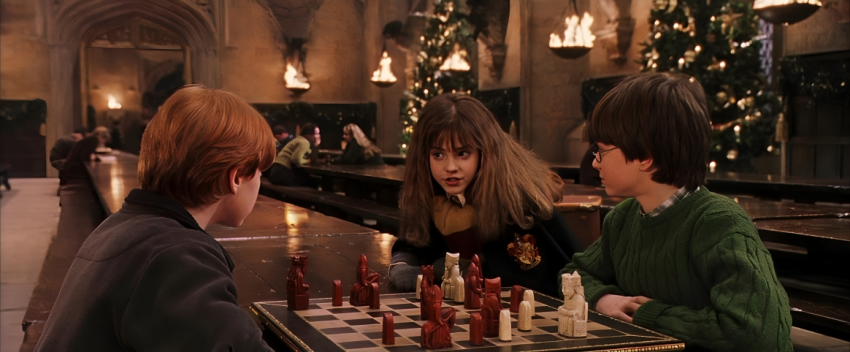
This act of selflessness demonstrates Ron’s bravery and willingness to sacrifice for the greater good, a recurring theme throughout the series. This scene was touching, and we applaud Ron for being ready to help his friend and for always being there whenever needed.
16. Professor Snape’s Death
Severus Snape’s death is a pivotal moment in the series. Lord Voldemort’s snake, Nagini, killed Snape during the Battle of Hogwarts. However, it’s later revealed that Snape’s death was part of a carefully orchestrated plan to defeat Voldemort. He wasn’t acting on behalf of evil, after all.
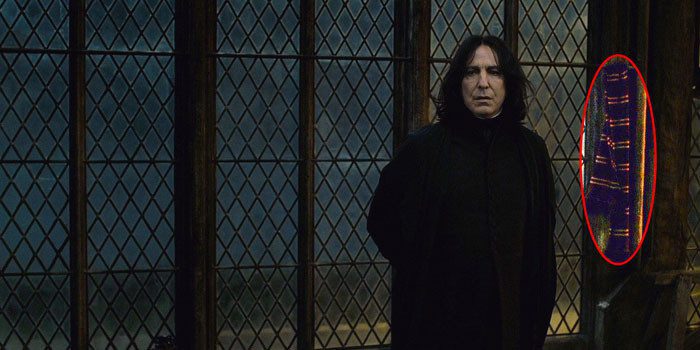
Before dying, Snape passes on important information to Harry Potter, including the truth about his connection to Voldemort and the importance of protecting Hogwarts. Snape’s death marks the culmination of his complex character arc, revealing his unwavering loyalty to Dumbledore and his love for Harry’s parents.
17. Her Hidden Skill
Overall, Professor McGonagall’s skills and character contribute significantly to the strength and resilience of Hogwarts and its students in the face of adversity. She is respected and admired by both students and fellow professors alike for her courage and unwavering commitment.
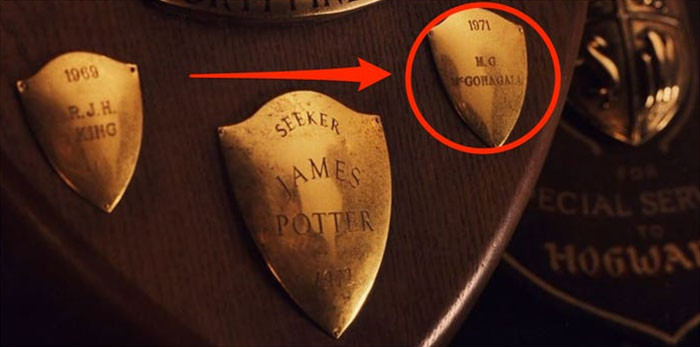
During an incident when Hermione escorted Harry and Ron to the trophy room at Hogwarts, where Harry sees his father’s medals, we noticed that Professor McGonagall also received a Quidditch award. Who would have guessed she could play? She must have been quite athletic when she was younger.
18. Lucius Almost Laid A Curse
In Harry Potter and the Chamber of Secrets, Lucius Malfoy nearly casts the Cruciatus Curse on Harry Potter during the chaotic events at Diagon Alley. After Dobby, the Malfoys’ house-elf, sabotages Harry’s plans to return to Hogwarts by causing a disturbance.
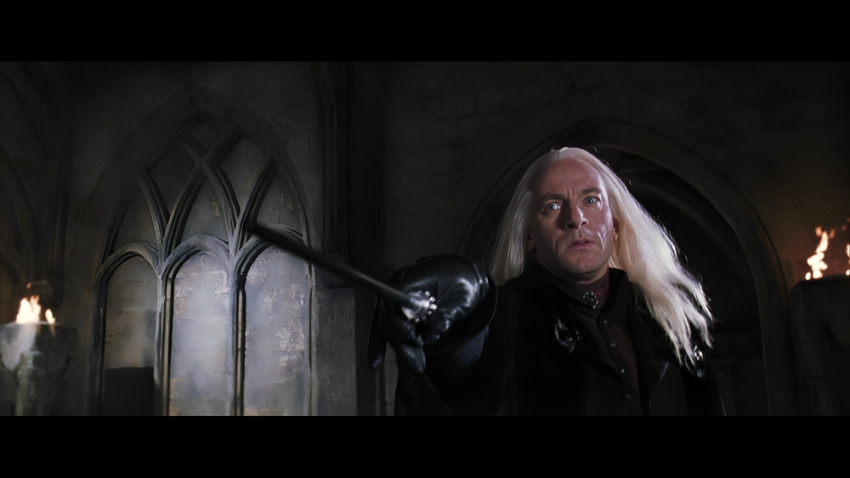
This made Lucius Malfoy enraged. He raises his wand threateningly, and it’s heavily implied that he intends to use the Cruciatus Curse on Harry before Dobby intervenes, causing the curse to rebound. This moment highlights Malfoy’s cruelty and dark magic.
19. Wizard Cereals
In the wizarding world of Harry Potter, several magical things were laid out for the audience to marvel at. Among them was a magical basin used to view and explore memories, allowing users to relive past experiences and gain insight into events.
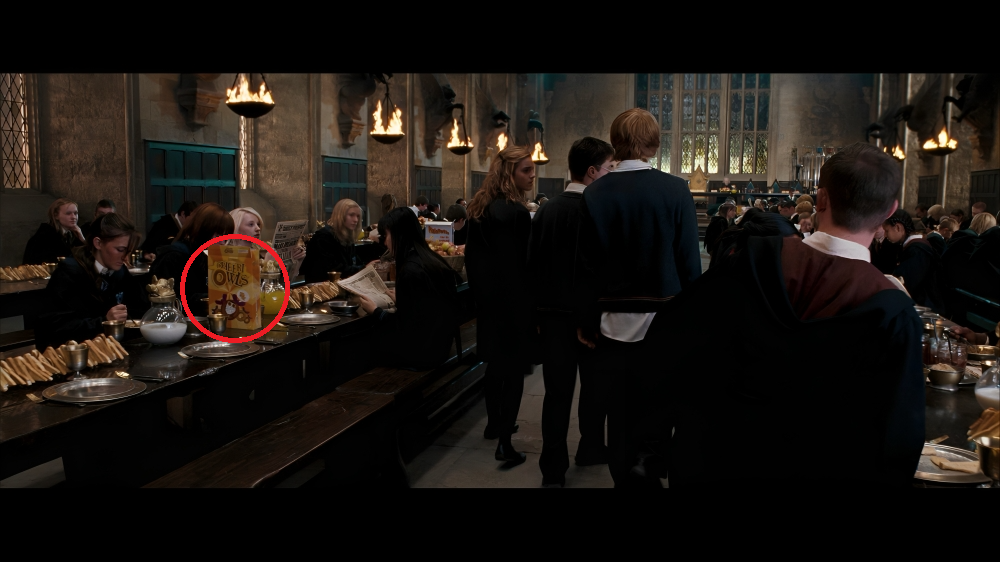
True Potterheads know that Harry Potter and the Order of the Phoenix has a scene where we see the friends walking down the enormous hall, and a surprise can be seen on one of the tables. A box of ‘Cheeri-Owls’! Yes, that’s a parody of a famous real-world brand of breakfast treats.
20. The Equus Effect
The relationship between the play Equus and Harry Potter is primarily through Daniel Radcliffe, who portrayed the magical boy in the film series and brought the role of Alan Strang to life in the play. It received critical acclaim, and Radcliffe’s performance was praised for its intensity and maturity.
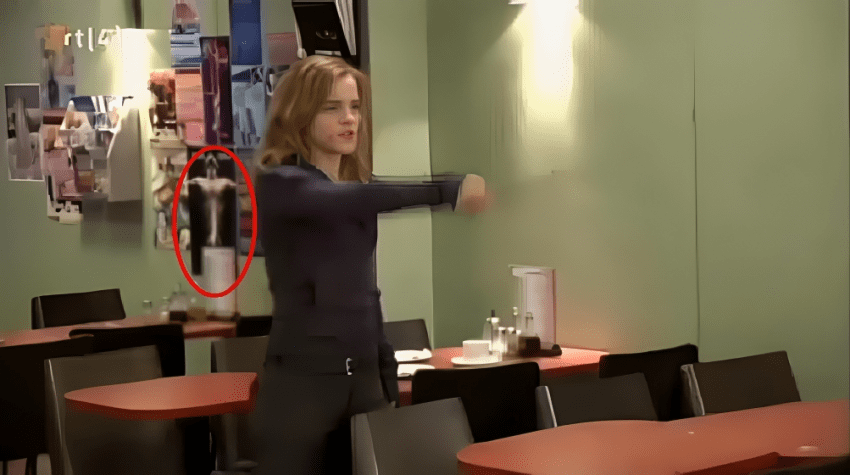
In this scene in Harry Potter and the Deathly Hallows I, you can see the poster for Equus behind Hermione. We think it might be a tribute to Richard Griffiths, who died in 2013 due to cardiac surgery complications. He played Daniel Radcliffe’s uncle and psychiatrist, Martin Dysart.
21. Mooney
Harry Potter used the Marauder’s Map quite a bit, making it a key part of the series. Here, we witness a small joke being played on the map by the film crew. The men’s nicknames who made the map are visible. Did you see them?
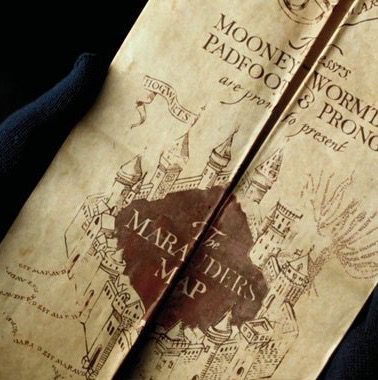
Prongs (from James Potter), Wormtail (from Peter Pettigrew), Padfoot (from Sirius Black), and Moony (from Remus Lupin) are the nicknames. But Moony is spelled Mooney instead of Moony to make fun of Karl Mooney, the visual effects supervisor for the film.
22. The 7th Horcrux
In the Harry Potter series, it’s revealed that Harry Potter himself unintentionally becomes the seventh Horcrux of Lord Voldemort. For those not in the know, dark wizards or witches hide a fragment of their soul in an object to achieve immortality. These objects become a Horcrux.
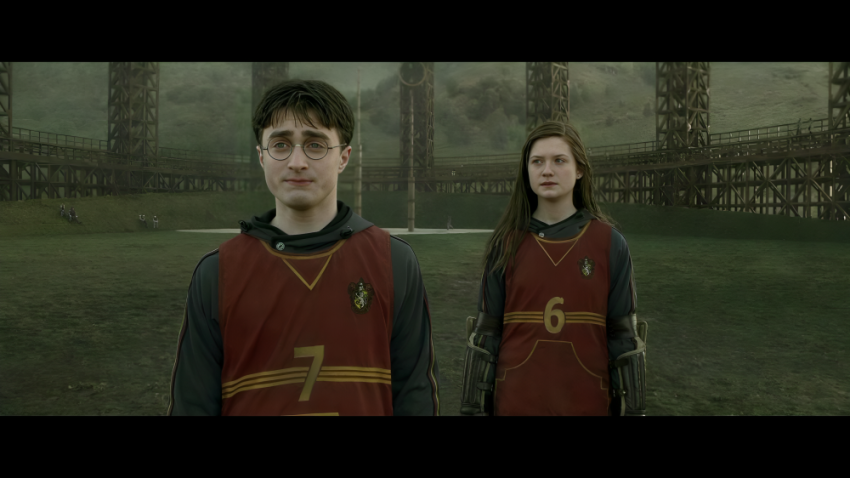
When Voldemort fails to kill Harry as a baby, a piece of Voldemort’s soul attaches itself to Harry, who was given the number 7 when he became a Quidditch captain. This could have been a clue that he was or has become Voldermort’s seventh Horcrux.
23. Muggle Books
Wizards hardly ever use muggle objects in the Harry Potter books and films—except Harry Potter with the Dursley family. In Harry Potter and the Prisoner of Azkaban, we see a wizard (played by the frontman of the band Stone Rose) at Leaky Cauldron, reading a muggle book while eating.

The book he is holding is extremely important, even though reading a muggle book is a great deal in and of itself. It’s Stephen Hawking’s book A Brief History of Time, which explores many things, including the concept of time travel. It was published in 1988.
24. Hand Me Downs
Ron Weasley’s penchant for wearing hand-me-down robes symbolizes his humble background and the economic struggles faced by his family. As the youngest of six siblings, Ron barely gets brand-new things and inherits most of his clothing and books from his older brothers, including his school robes.
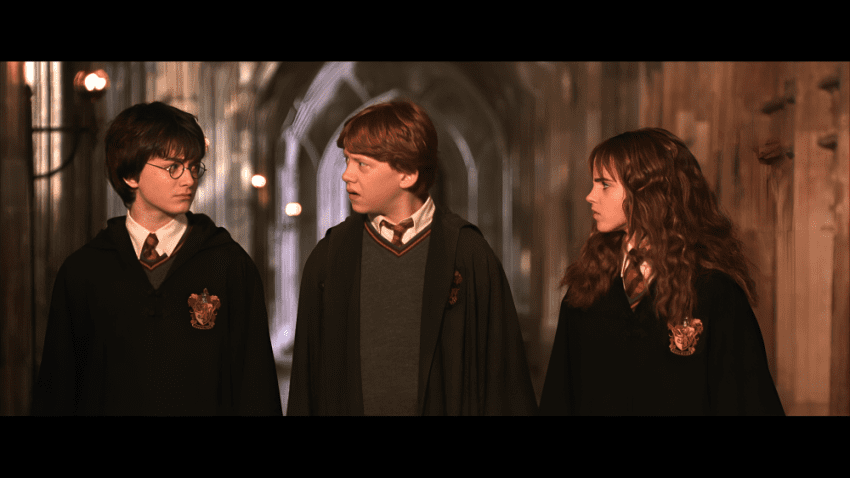
Despite the frayed edges and patched-up sleeves, Ron proudly wears these garments. In this picture from a scene, we can see how faded his robes are. The book’s author, J.K. Rowling, emphasizes the significance of character over worldly riches or possessions.
25. Slughorn Wand
Professor Slughorn’s wand has an interesting backstory. It’s made of cedar wood with a dragon heartstring core, known for producing wands with powerful and flamboyant magic. It is among the few that have survived the test of time and was described as fairly flexible.
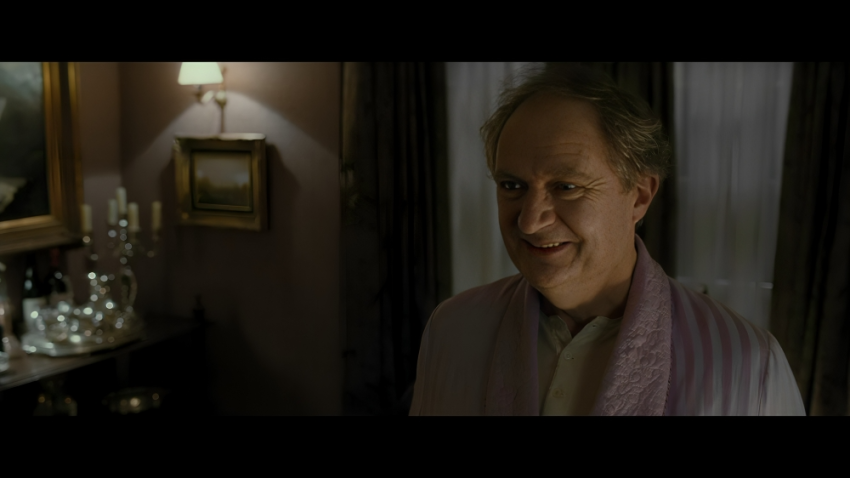
Despite being over a century old, Slughorn’s wand remains in excellent condition. But have you noticed that the tip of the handle of the wand looks like a slug or even a pair of horns? Interestingly, it was the only want with a metal casting.
26. The Significance Of The Scarves
In the Harry Potter series, Ron, Hermione, and Harry often wear scarves differently. While the books don’t provide detailed descriptions of how and why they tie their scarves in various ways, we get to witness the disparities in the movies. It’s interesting how small details contribute to the movie.
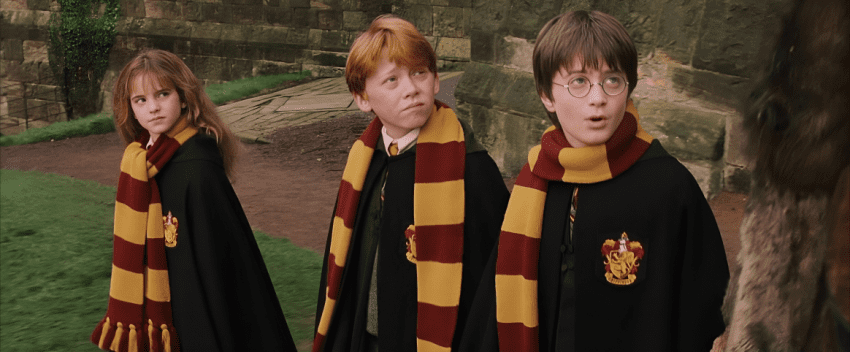
Being more laid-back, Ron loosely drapes his scarf around his neck, while Hermione opts for a neater knot because she likes everything in order. As for Harry, he wears his scarf in a simple loop. Ultimately, the way they tie their scarves reflects their unique personalities.
27. Different Hair Color
In the Harry Potter books, Nymphadora Tonks is described as having vibrant, bubble-gum pink hair, which reflects her quirky and eccentric personality. However, in the film adaptations, her hair color is depicted as a more subdued shade of purple or blue. Why the change?
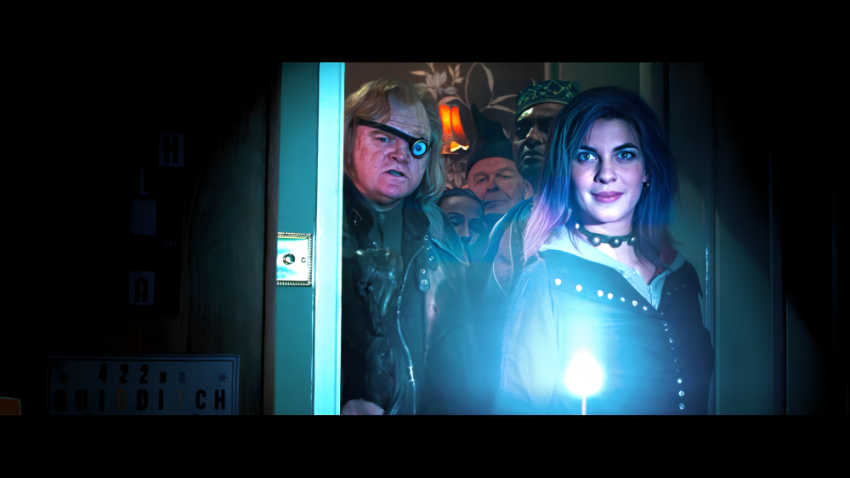
The reason for this change likely lies in the filmmakers’ interpretation of the character and their desire to convey her uniqueness. We also think this made it easier for the audience to distinguish her from Dolores Umbridge, who wore pink clothing, and that makes a lot of sense.
28. Sirius Black Words
Sirius Black, Harry’s godfather brought to life by the incomparable Gary Oldman, played several vital roles throughout the movie. The last words spoken by his godfather hinted at Harry’s usage of the Resurrection Stone in Harry Potter and the Deathly Hallows I.
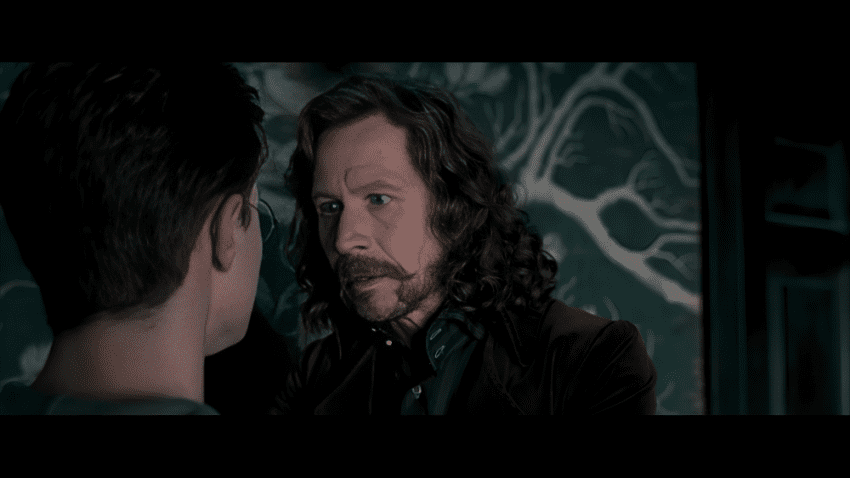
In Harry Potter and the Prisoner of Azkaban, Sirius’ words assured Harry that those who love us always stay in our hearts. These words serve as an important part and also highlight the bond between Sirius and Harry until Sirius’s death.
29. The Millennium Bridge
The inaccuracy regarding the Millennium Bridge in Harry Potter and the Half-Blood Prince pertains to its construction date. The timing creates a great mystery. In the film, Death Eaters attack and destroy the Millennium Bridge during their rampage through London.
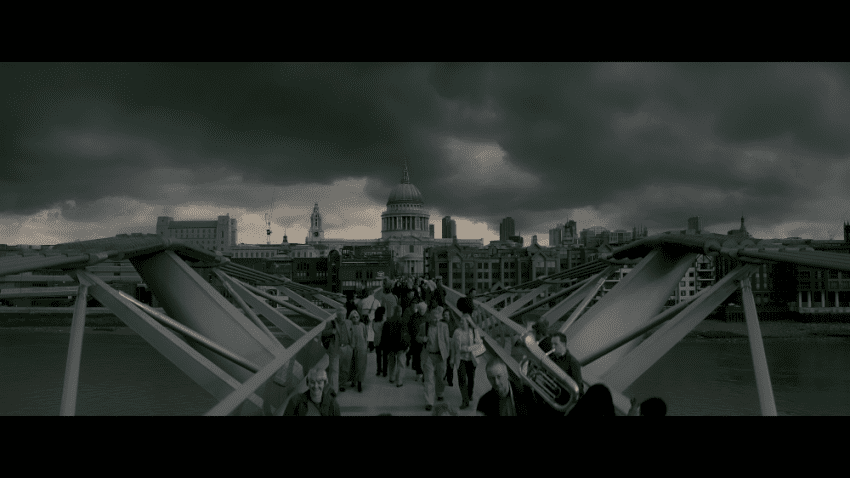
However, the bridge depicted in the film is the same one that opened in 2000, well before the events of the film, which take place during the 1996-1997 school year. So, it’s historically inaccurate in terms of its construction timeline. But nobody was paying attention; everyone was focused on the fight between good and evil.
30. Voldemort Appearance
There is a symbolic connection between Voldemort’s appearance and the destruction of his Horcruxes. As Voldemort’s Horcruxes are destroyed, his power weakens, and his physical form deteriorates. This is especially evident in Harry Potter and the Deathly Hallows, the final book.
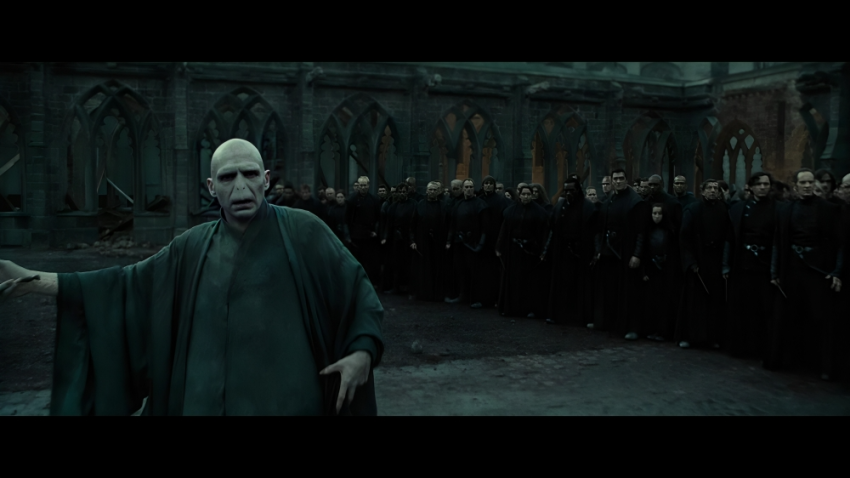
As Harry destroys several of Voldemort’s Horcruxes, Voldemort becomes more vulnerable and less formidable. He is no longer the unbeatable foe. His appearance reflects the diminishing strength of his soul, which is evident in his many hasty decisions, such as killing Professor Snape.
31. The Same Cliffs
Another essential element that we are sure you must have missed, and we suggest you watch again, can be found in Harry Potter and the Half-Blood Prince—the scene takes place in the orphanage where Professor Dumbledore visits his young friend, Tom Riddle.
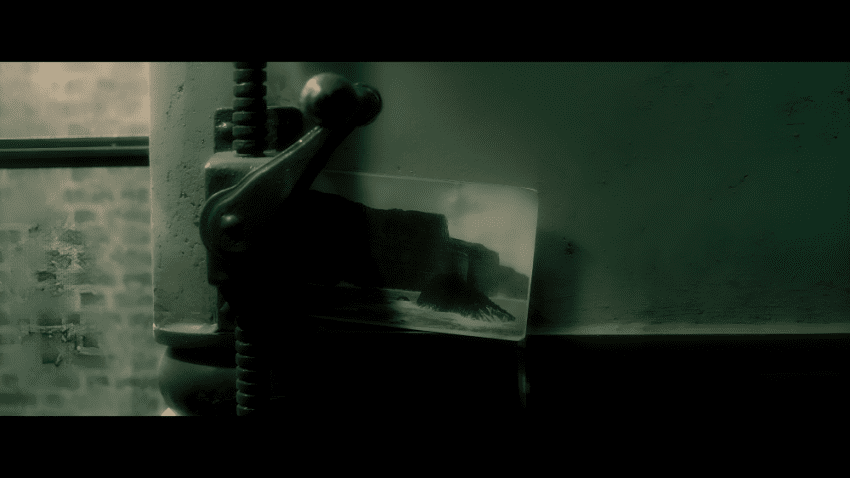
In the room between Tom and Professor Dumbledore is a picture of some cliffs that will later appear in the movies. The locket, one of Voldermort’s seven Horcruxes, is obtained by Harry Potter and Professor Dumbledore along these same cliffs.
32. Anne Boleyn’s Portrait
While there wasn’t any mention of a portrait of Anne Boleyn hanging in Hogwarts in the Harry Potter series, a particular scene had us thinking otherwise. Anne Boleyn was a historical figure, the second wife of King Henry VIII of England, who was beheaded for treason.
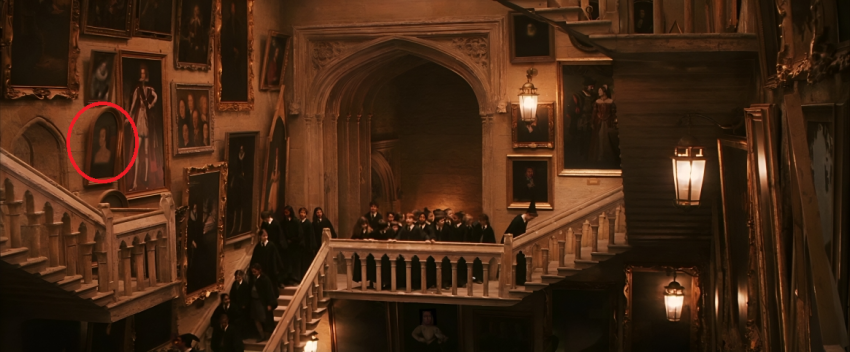
Hogwarts is filled with many magical portraits depicting witches, wizards, and historical figures. Anne’s husband accused her of witchcraft (although the consensus is that it was she was executed for her inability to produce a male heir), so it only makes sense that her portrait appeared in a wizardry school. Don’t you think so?
33. The Warner Bros. Logo
Those with a keen eye must have noticed this. The Warner Bros logo gets darker through each movie in the Harry Potter series. The tone and themes of the films become progressively darker as the story progresses. This reflects the overall narrative arc of how the series played out.
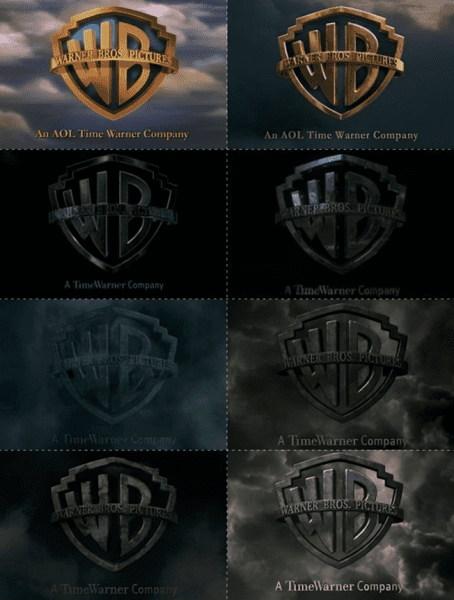
The series begins with a more lighthearted tone in the earlier films. It gradually delves into darker and more mature themes as Harry Potter and his friends face more significant and difficult challenges, fight for their lives, and confront the growing threat of Voldemort and his Death Eaters.
34. Dolores Umbridge
Dolores Umbridge, the authoritarian and power-hungry Ministry official who everyone loves to hate, is notorious for wearing pink. Her dresses, often adorned with bows and frills, starkly contrast her strict and oppressive character. This deliberate choice of attire reflects Umbridge’s manipulative nature.
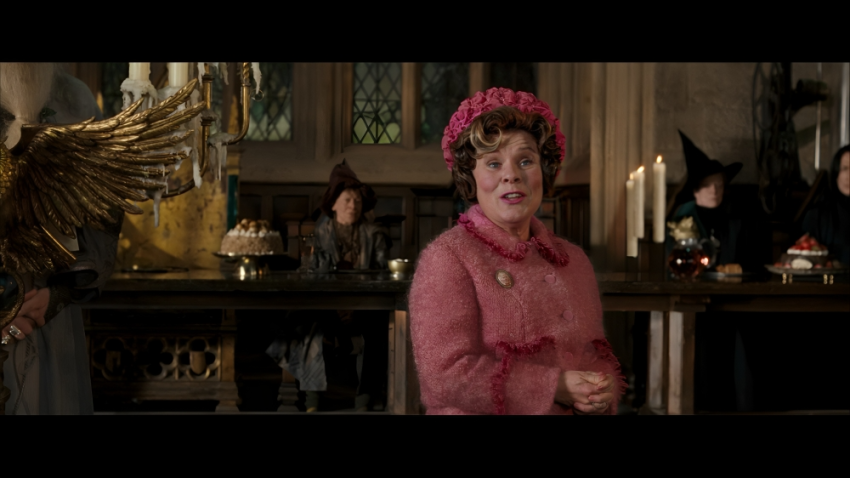
She uses a facade of sweetness to mask her true intentions. Her insistence on conformity and adherence to Ministry regulations is symbolized by her perfectly coordinated outfits, portraying an image of propriety while concealing her ruthless methods. The pink lady, indeed.
35. Bellatrix Was Pregnant
In the movie adaptation of Harry Potter and the Order of the Phoenix, Helen McCrory was initially cast as Bellatrix, one of the series’s primary antagonists. However, because of her pregnancy, she chose not to participate in the movie, and Helena Bonham Carter took her place.
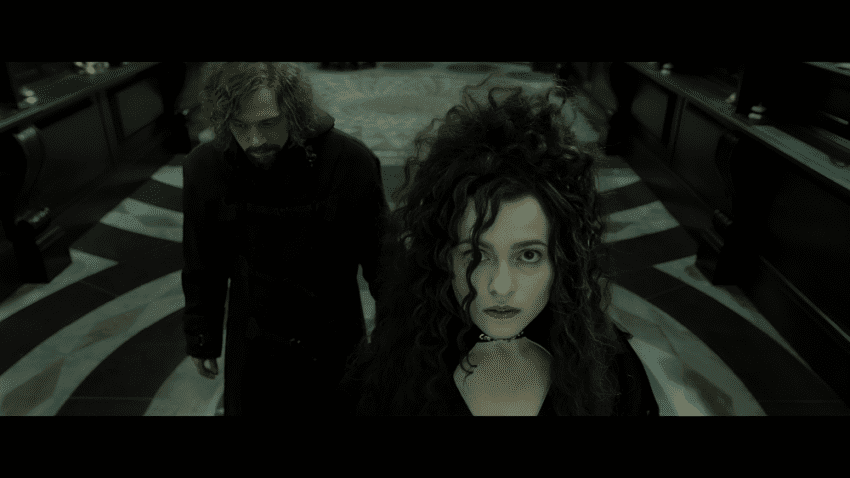
Ironically, not long after filming was over, Bonham Carter found out she was pregnant. In the end, to compromise, Bonham Carter wore considerably looser clothing in the movie than she did before, which was more form-fitting to hide her growing belly.
36. Like Father, Like Son
Here is another scene from the series we bet most people missed or didn’t notice. During a recollection scene in Harry Potter and the Order of the Phoenix that shows James Potter disarming Severus Snape, Sirius Black’s remark is, “Nice one, James.”
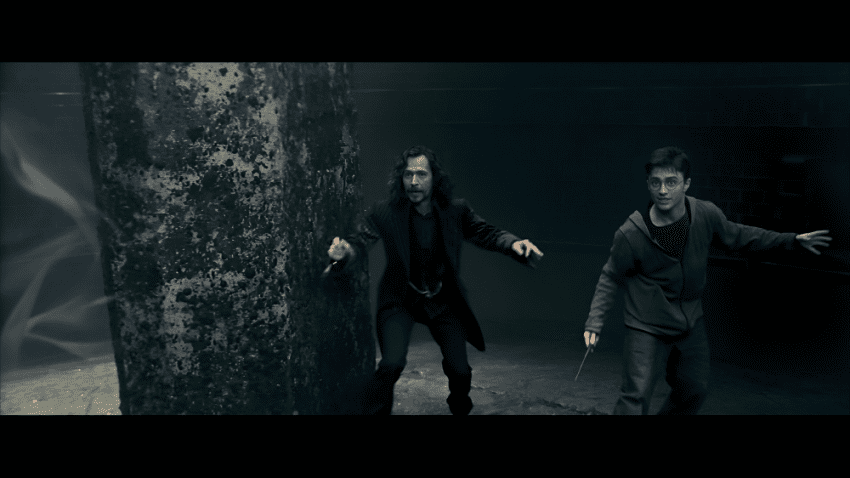
Sirius Black made the same observation that Harry did while observing James’ boy, now his godson, disarm a death eater. James Potter was known for his bravery, talent in Quidditch, popularity, and mischievousness among his peers at Hogwarts.
37. Bauxbatons Dance
Here is another thing most folks didn’t notice. If you remember correctly, in Harry Potter and the Goblet of Fire, the female force of the Bauxbatons Academy of Magic in the Pyrenees attends the Triwizard Tournament supporting the charming Fleur Delacour, their representative.
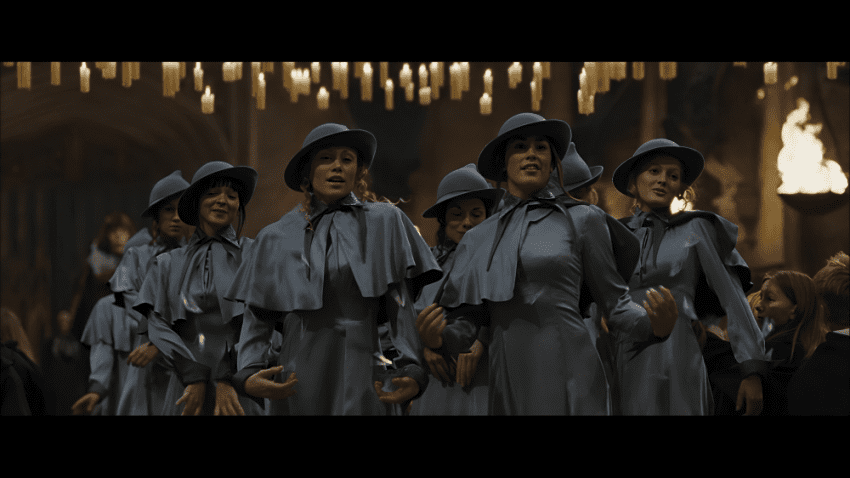
Their later dance moves seem familiar, especially to older viewers, because they ultimately execute a better rendition of a particular muggle dance. They are essentially doing a more elegant version of the Macarena, a glocal phenomenon in 1996. We wonder what the youngsters today think of that song.
38. The Moaning Myrtle
Moaning Myrtle, also known as Myrtle Elizabeth Warren, is a ghost who haunts the girls’ bathroom on the second floor of Hogwarts School of Witchcraft and Wizardry. Myrtle is known for her melancholic demeanor, frequent wailing, and flooding the bathroom.
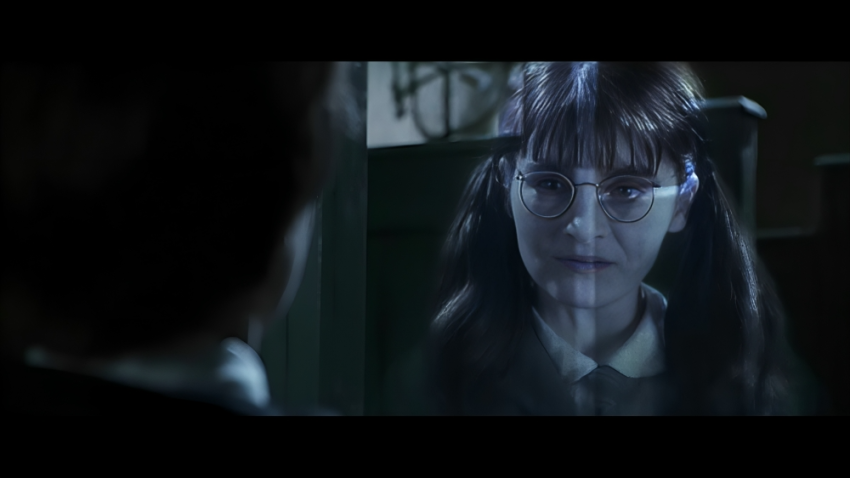
It might already be obvious, but we’d like to emphasize that the character was supposed to be a teenager. Shirley Henderson, who was 37 when the series was filmed, brought the role to life. The actress is around 58 now. It’s crazy how time flies!
39. The Mic Boxes Fail
Anyone who’s worked in the movie industry will tell you that mistakes during filming are quite common and often unavoidable. They can add authenticity and charm to a movie, making it more relatable and human. Ultimately, it’s the final product and the story it tells that genuinely matter to audiences.
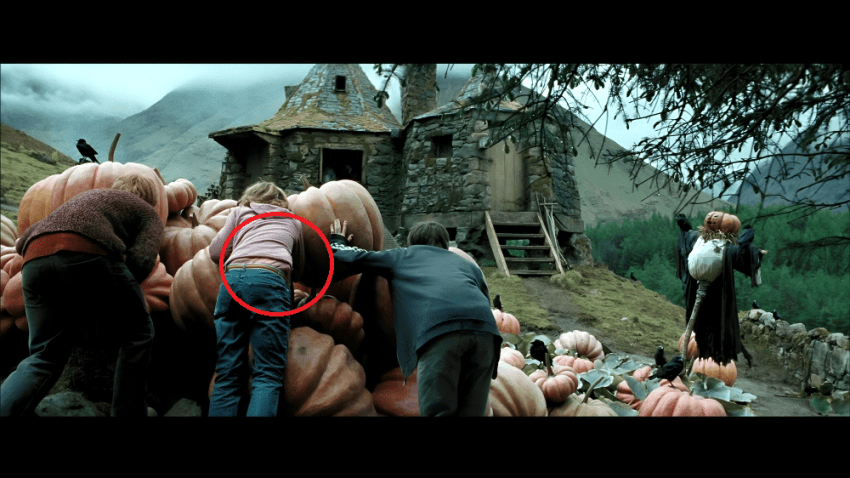
Even the respected Alfonso Cuaron, the director of Harry Potter and the Prisoner of Azkaban, wasn’t immune to mistakes. For some main characters in the film, the director chose to use microphone packs instead, which ended up being obvious in the final edit.
40. The Hidden Message
On the surface, Professor Severus Snape seems to be a cruel person whose mission is to make Harry’s life as difficult as possible, even in the first film. But there were a few instances where he wasn’t mean. Here’s an example.
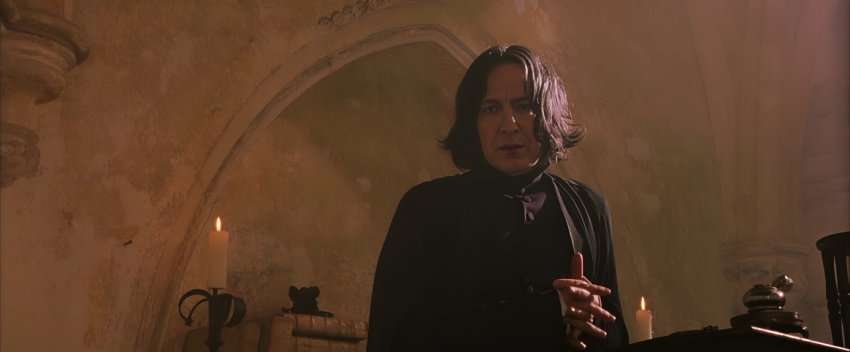
He asks Harry what would happen if wormwood and asphodel were combined. Asphodel is a lily; lilies symbolize death in the Victorian flower code, while wormwood is a sign of absence. Based on this, we think Snape was referring to Harry’s mother, Lily.
41. No Dragon Was Harmed
In Harry Potter and the Goblet of Fire, all dragons involved in the Triwizard Tournament are kept safe. While the dragons present a significant challenge for the champions, there is no explicit mention of any of the dragons being harmed or having died.
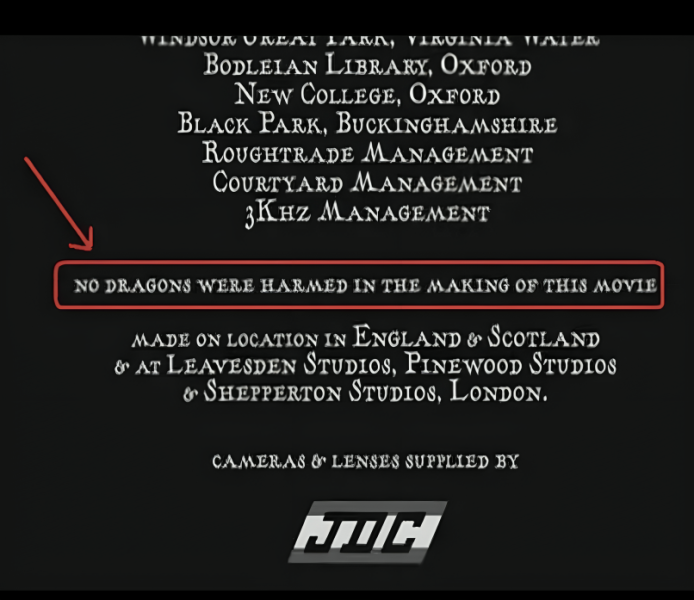
This reflects a theme throughout the series of valuing and protecting magical creatures, even amid challenging circumstances. The end credits have a message that reads, “No dragons were harmed in the making of this movie.” We liked how helpful they were in letting everyone know.
42. Nagini
As mentioned earlier, as the series progressed, it became darker. Gone were the fun-loving days of the first part, which had a happier and funnier theme. The next few movies became darker, and so did the theme. Regardless, the intensity made them enjoyable.
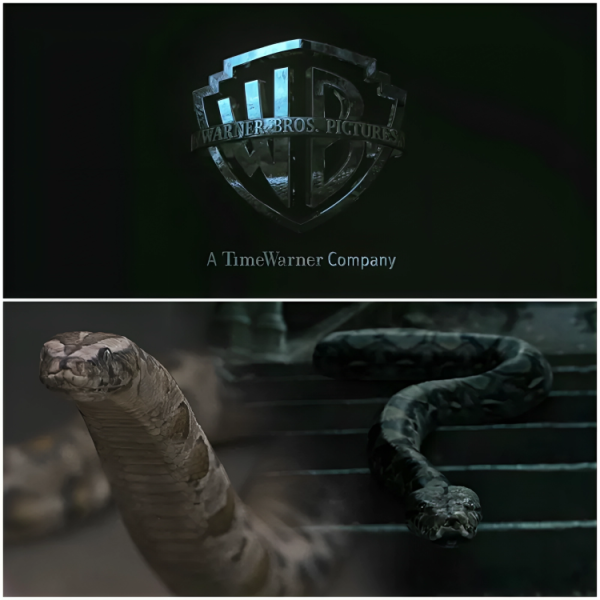
In the opening credits of Harry Potter and the Goblet of Fire, the logo is dark, but its reflection also has a glossy, scaly object in it. We think this was Nagini, the maledictus turned a snake, who subsequently makes an appearance in the opening scene.
43. The Dancing Trick
In Harry Potter and the Goblet of Fire, Harry Potter learns to dance for the Yule Ball. As the Triwizard Tournament approaches, Harry and his fellow Hogwarts students are swept up in the excitement and anticipation of the upcoming festivities.
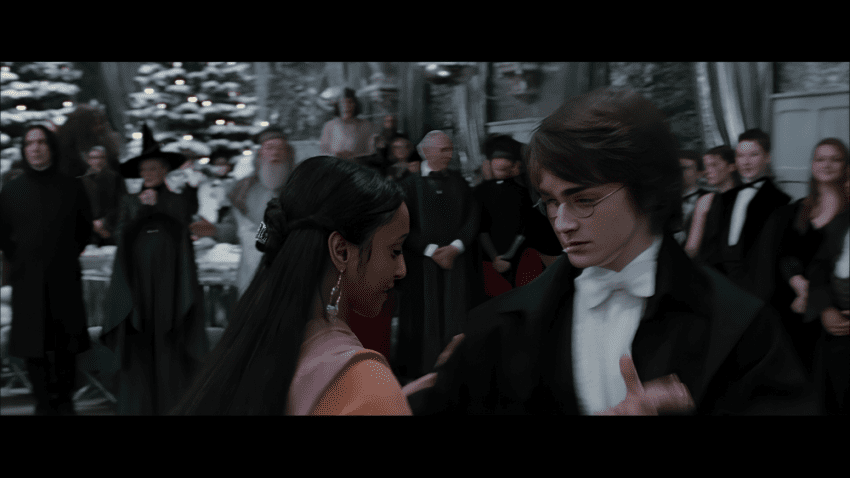
The backstory is that Daniel Radcliffe was filming a different scene, so he didn’t have time to practice. In fact, he had four days to prepare. Ultimately, the director chose to shoot him from the waist up in order to minimize errors and perhaps hide his dance missteps.
44. All Key Events
Indeed, Harry Potter and The Deathly Hallows II features an epic sequence during the great battle that pays homage to the installments before it. As the battle rages on, viewers are treated to familiar locations, spells, and characters from earlier films.
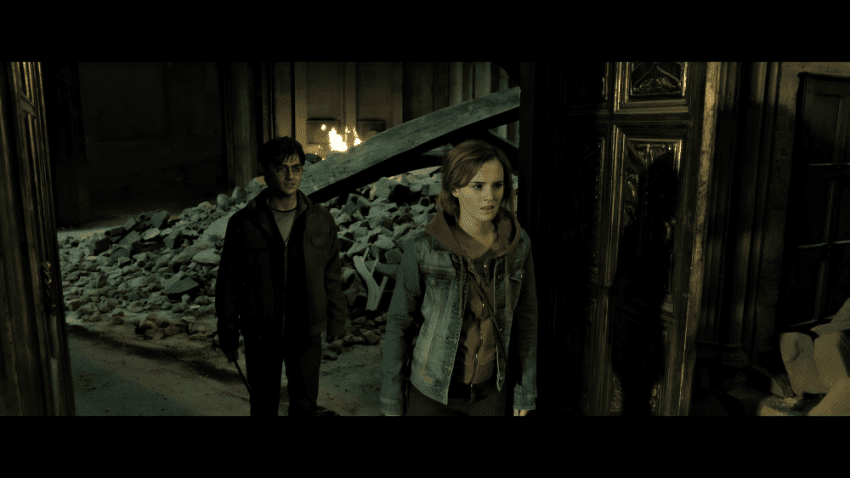
This evokes a sense of nostalgia and brings the story full circle. Scenes such as the Room of Requirement, the Forbidden Forest, and the Great Hall serve as backdrops for intense duels and pivotal moments, recalling key events from previous installments.
45. Newt Scamander
The author of “Fantastic Beasts and Where to Find Them” in the wizarding world of Harry Potter, Newt Scamander is known for his deep love and understanding of magical creatures, which he showcases through his travels to document and protect them.

But what many people don’t know or didn’t pay attention to is that Newt Scamander actually made an appearance in the Harry Potter books. Newt Scamander’s name appeared on the Marauder’s Map in Harry Potter and the Prisoner of Azkaban.
